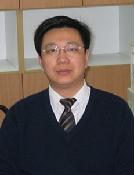
| Positions: | Professor |
|---|---|
| Academic Title: | Professor |
| Mailing Address: | Jun-Jie WANG |
Multi-wavelength observational and theoretical study of star formation
Star formation and early stellar evolution is one of the hottest topics in modern astrophysical research fields. To understand star formation is the basis of understanding of planet and galaxy formation. Star formation process is extremely complex, which includes a lot of physical process such as collape, accretion, outflow, shock wave, collision and so on. Besides the self-collape of molecular clouds,the external trigger mechanism could play a key role for next generation of star formation. Our present project is focusing on the study of trigger star formation by molecular clouds collision and the interaction between HII regions /bubble or SNRs and the surrounding molecular clouds. We will try to obtain a large sample of candidates of possible clouds collision and the molecular clouds associated with HII regions and high-mass stars, on the basis of CO molecular line survey and other observational data on different wavelenghs, and to make millimeter, submillimeter, radio, optical and infrared observations. Then we will try to diagnose the external trigger condition and mechanism of star formation, and to build theoretical models. Our results will be helpful for understanding the trigger mechanism and process of Galactic star formation. It also can provide with very important evidence of the process of Galactic evolution.
A few possible PhD selected research fields :
(1) Triggering mechanism of star formation
(2) Accretion/outflow in star formation process
(3) High mass star formation and HII regions
(4) Formation of star clusters
(5) Astrochemistry in star formation and early stellar evolution
(6) A submillimeter survey towards Galactic star forming regions
Selected publications in different branches of the research field of star formation:
"Spectral classification and reddening in the young open cluster NGC 6913", Wang, J.-J., Hu, J.-Y., Astron. Astrophys., 356,118, 2000
"A metal-poor Compact HII region with a small isolated and dense young stellar cluster", Wang, J.-J., Wei, J.-Y., Hu, J.-Y., ApJ, 573, 238 , 2002
“The first observation of Circumstellar Nebula of VI Cyg 12”, Wang, J.-J., Zhu, Z.-X., Chin. Phys. Lett., vol. 20, no. 5, 778, 2003
“ Massive star formation triggered by collision between Galactic and accreted intergalactic clouds”, Wang, J.-J., Chen, W.-P., Miller, M., Qin, S.-L., Wu, Y.-F., ApJ, 614, L105, 2004
"Observations of CO Lines at Submillimeter Wavelengths from Molecular Clouds Associated
with UCHII/HII Regions", Qin, S.-L., Wang, J.-J., Zhao, G., Miller, M., Zhao, J.-H., Astron. Astrophys.,
484,361,2008
“Star Formation Associated with the Supernova Remnant IC443”, Xu, J.-L., Wang, J.-J., & Miller, M., ApJ, 727, 81, 2011
“Multiwavelength study of the infrared dust Bubble S51”, Zhang, C. P. & Wang, J. J., A&A, 544, A11, 2012
“Properties and Keplerian Rotation of the Hot Core IRAS 20126+4104”, Xu, J.-L., Wang, J.-J., & Ning, C.-C., ApJ, 744, 175, 2012
“Outflow and accretion detections in the young stellar object IRAS 04579+4703”, Xu, J.-L., Wang, J.-J., & Qin, S.-L., A&A, 540, L13, 2012
“A Systemic Study of 14 Southern Infrared Dark Clouds with the N2H+, HNC, HCO+, and HCN Lines”, Liu, X.-L., Wang, J.-J., & Xu, J.-L. MNRAS, ArXiv e-prints: 1301.5284, 2013